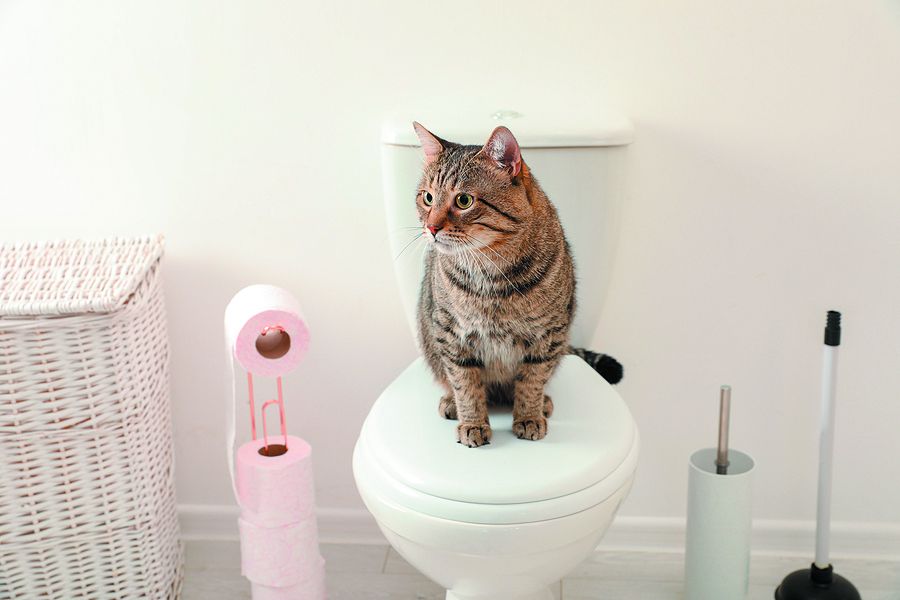The content listed below involving How to Dispose of Cat Poop and Litter Without Plastic Bags is immensely compelling. You should check it out.

Introduction
As feline proprietors, it's vital to be mindful of exactly how we get rid of our feline buddies' waste. While it might appear hassle-free to purge pet cat poop down the toilet, this method can have damaging consequences for both the atmosphere and human wellness.
Alternatives to Flushing
The good news is, there are safer and more accountable methods to throw away pet cat poop. Take into consideration the following alternatives:
1. Scoop and Dispose in Trash
The most common approach of getting rid of feline poop is to scoop it right into a biodegradable bag and throw it in the trash. Make sure to utilize a committed clutter inside story and take care of the waste without delay.
2. Usage Biodegradable Litter
Select naturally degradable feline trash made from products such as corn or wheat. These clutters are eco-friendly and can be safely gotten rid of in the trash.
3. Bury in the Yard
If you have a yard, consider hiding pet cat waste in an assigned area away from veggie yards and water sources. Make sure to dig deep sufficient to avoid contamination of groundwater.
4. Set Up a Pet Waste Disposal System
Purchase an animal waste disposal system specifically developed for cat waste. These systems use enzymes to break down the waste, reducing smell and ecological effect.
Health Risks
Along with ecological concerns, purging feline waste can likewise pose wellness dangers to humans. Pet cat feces might include Toxoplasma gondii, a parasite that can trigger toxoplasmosis-- a potentially extreme health problem, particularly for expectant ladies and individuals with damaged body immune systems.
Ecological Impact
Flushing pet cat poop introduces damaging virus and bloodsuckers into the water supply, posturing a significant threat to water communities. These impurities can negatively affect aquatic life and compromise water top quality.
Final thought
Responsible family pet possession prolongs past offering food and sanctuary-- it also entails correct waste management. By avoiding flushing feline poop down the toilet and selecting alternative disposal approaches, we can decrease our environmental footprint and protect human health.
Why Can’t I Flush Cat Poop?
It Spreads a Parasite
Cats are frequently infected with a parasite called toxoplasma gondii. The parasite causes an infection called toxoplasmosis. It is usually harmless to cats. The parasite only uses cat poop as a host for its eggs. Otherwise, the cat’s immune system usually keeps the infection at low enough levels to maintain its own health. But it does not stop the develop of eggs. These eggs are tiny and surprisingly tough. They may survive for a year before they begin to grow. But that’s the problem.
Our wastewater system is not designed to deal with toxoplasmosis eggs. Instead, most eggs will flush from your toilet into sewers and wastewater management plants. After the sewage is treated for many other harmful things in it, it is typically released into local rivers, lakes, or oceans. Here, the toxoplasmosis eggs can find new hosts, including starfish, crabs, otters, and many other wildlife. For many, this is a significant risk to their health. Toxoplasmosis can also end up infecting water sources that are important for agriculture, which means our deer, pigs, and sheep can get infected too.
Is There Risk to Humans?
There can be a risk to human life from flushing cat poop down the toilet. If you do so, the parasites from your cat’s poop can end up in shellfish, game animals, or livestock. If this meat is then served raw or undercooked, the people who eat it can get sick.
In fact, according to the CDC, 40 million people in the United States are infected with toxoplasma gondii. They get it from exposure to infected seafood, or from some kind of cat poop contamination, like drinking from a stream that is contaminated or touching anything that has come into contact with cat poop. That includes just cleaning a cat litter box.
Most people who get infected with these parasites will not develop any symptoms. However, for pregnant women or for those with compromised immune systems, the parasite can cause severe health problems.
How to Handle Cat Poop
The best way to handle cat poop is actually to clean the box more often. The eggs that the parasite sheds will not become active until one to five days after the cat poops. That means that if you clean daily, you’re much less likely to come into direct contact with infectious eggs.
That said, always dispose of cat poop in the garbage and not down the toilet. Wash your hands before and after you clean the litter box, and bring the bag of poop right outside to your garbage bins.
https://trenchlesssolutionsusa.com/why-cant-i-flush-cat-poop/

Do you enjoy more info about Can You Flush Cat Poop Down The Toilet?? Post a comment down the page. We will be glad to hear your opinion about this blog entry. Hoping that you come back again in the future. Remember to take a moment to share this write-up if you enjoyed it. Many thanks for your time. Don't hesitate to check up our site back soon.
Hire A Pro